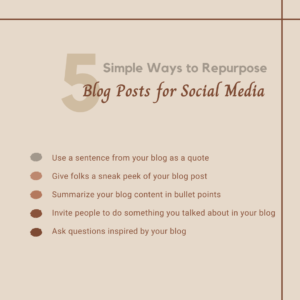It’s black cat season, and time for some spooky tales…or maybe just a quick chat about short-tail vs. long-tail keywords.
Did you know there are different types of keywords? One of the broadest (but still super helpful) ways to divide keywords is to categorize them as either short-tail or long-tail. So, what’s the difference, and which one should you use?
Let’s find out!
What are Short-tail Keywords?
As the name implies, these keywords tend to be short. Just one or two words.
Short-tail keywords are pretty general. They can drive a lot of traffic to your site if you’re ranking well for that keyword, but it’s also likely that a fair bit of that traffic won’t result in a sale for you.
For example, “newborn photography” is a short-tail keyword. It’s great if you rank well for this keyword because your site will get lots of visitors. But because it’s so general, a lot of visitors may decide you’re not the photographer for them because your studio isn’t in their area, your style is a little different than they love, or you specialize in studio sessions and they want to do at-home lifestyle.
If you’re writing your own blog posts, one of the advantages of short-tail keywords is that they’re easy to slip into your content.
But…you’re also going to run into a lot more competition with short-tail keywords. After all, how many thousands of people offer newborn photography and are trying to rank well for that keyword?
What are Long-tail Keywords?
These are (surprise, surprise) generally longer. They usually fall in the range of three to five words, but they’re not limited to that.
Long-tail keywords are more specific. They aren’t going to drive as much traffic to your site, simply because not as many people are narrowing down their search that much. But the traffic you do get is likely to consist of people who are interested in what you have to offer.
For example, “at-home newborn photographer in LA” is a long-tail keyword. Obviously, this isn’t going to bring as many visitors to your site, because fewer people are interested in that specific service in that specific place. But if that’s what you offer, that’s definitely a keyword you want to rank for.
Long-tail keywords are usually easier to rank for because you’re niching down. The number of people who offer baby pictures at home in LA is smaller, so you run into less competition.
A Caveat
It’s important to note that a shorter search query doesn’t automatically mean it’s a short-tail keyword, and vice versa. Whether something is a long-tail or short-tail keyword depends less on the number of words used and more on search volume. (Search volume = how many people are using that search term. The higher the search volume, the more likely it is that it’s a short-tail keyword, since it’s general and appeals to a broader audience. Lower search volume will probably be a long-tail keyword, since it’s focused and specific.)
Don’t sweat this too much. As a general rule of thumb, short-tail keywords = shorter, more general queries, and long-tail keywords = longer, more specific queries. The big takeaway here is that shorter doesn’t necessarily equal more popular. For example, you may find that “newborn photography near me” actually has a higher search volume than plain old “newborn photography.” Which would, counterintuitively, make the longer search query a short-tail keyword as well.
The only way you’ll figure this out is through keyword research—which is one of the reasons it’s so important to do just that! You’ll get much better results from truly getting to know your audience than by making assumptions based on word count or anything else.
So, here’s how it breaks down:
Short-tail Keywords Pros and Cons
Pros
- Easy to work into content
- Higher search volume (lots of people are typing these into search engines)
- Relevant answers for a wide audience
Cons
- Stiff competition
- Lower conversion rate (visitors who turn into clients)
Long-tail keywords Pros and Cons
Pros
- Less competition
- Higher conversion rate (visitors who turn into clients)
- Relevant answers for YOUR audience
Cons
- Can be tricky to work into content while still sounding natural
- Lower search volume (not as many people are using that keyword to search)
Should You Use Short-tail or Long-tail Keywords in Your Blog Posts?
As you’ve probably guessed, it’s a good idea to use both short-tail and long-tail keywords in your blog content. And it takes time, patience, and research to figure out which keywords produce the best results. Don’t limit yourself to one or the other. Do your research and then play around with both to determine which keywords your audience is searching for, and which keywords generate the most traffic and sales for your site.
When you brainstorm keywords, don’t get hung up on the number of words in that keyword. Instead, think about your audience. How likely are they to type this keyword into a search engine? And if they find your site in the search results, will your content provide them with helpful resources on that topic?
The key to successfully using long-tail and short-tail keywords is the same as the key to successful blogging in general. You need to really get to know your target audience so you understand what they’re searching for and how you can make it easier for them to find you. Write for people first, search engines second, and you won’t go far wrong.
If you need help writing blog posts that are people-focused and SEO-friendly, get in touch! I’d love to help you create quality content that helps your readers and your business. Contact me to learn more.



